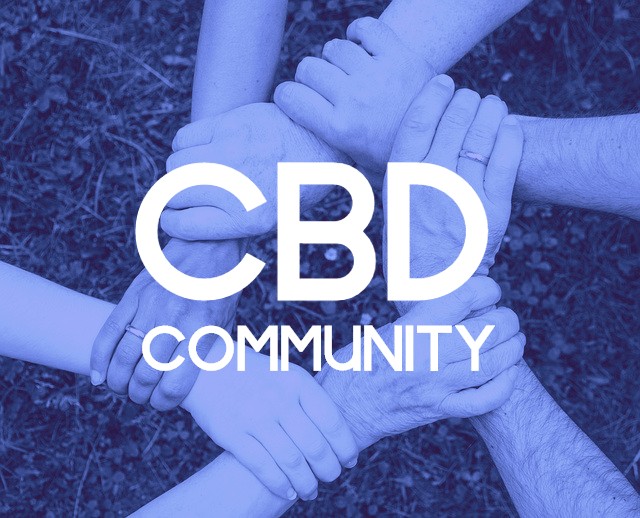Cannabinoids have been proven to decrease severity of pain, which includes neuropathic pain, inflammation pain and cancer pain. Cannabinoids can reduce spasticity as well as the discomfort that comes with muscle spasms. In addition to reducing the severity of pain, many sufferers say that cannabis alters the way that pain is felt and makes it less painful as well as less distracting. In some situations, cannabis may enhance the intensity of pain that is acute. Cannabinoids are neuroprotective that protect nerves from acute injuries such as head trauma or stroke as well as from diseases that result in chronic injury like Alzheimer’s disease. They also have anticonvulsant properties and, in certain circumstances they can also have antipsychotic effects.
Cannabinoids can also alter our consciousness through our nervous system. Based on the concentration or the preparation the cannabinoids may cause stimulating or relaxing. Cannabinoids can reduce the speed of reaction and trigger other modifications in the perception of sensory. A lot of patients report a positive mood and relaxation, as well as laughter and social comfort, as well as distortion of time, and increase in the intensity of everyday events (e.g. eating, sexual activity, listening to music) following the use of cannabis. Cannabis can trigger an effect of dissociation (awareness disconnecting from one’s body and the surroundings) as well as an integration result (greater awareness of oneself and the environment).
Abstract: Medical Study
‘The analgesic properties of delta-9-tetrahydrocannabinol.’
Noyes R Jr, Brunk SF, Avery DA, Canter AC.
Abstract
The administration of single oral doses of delta-9-tetrahydrocannabinol (THC) to patients with cancer pain demonstrated a mild analgesic effect. In a dose of 20 mg, however THC caused adverse effects that could hinder its use for therapeutic purposes, including dizziness, somnolence, ataxia blurred vision, and ataxia. Unexpected adverse reactions were also seen at this dosage. THC 10 mg was well-tolerated and despite its sedative effects it has an analgesic effect.
Abstract: Medical Study
“Nabiximols for patients with cancer treated with opioids who suffer from chronic pain that is not controlled in a placebo-controlled, randomized study of doses in a graded manner.’
Abstract
Patients suffering from advanced cancer who experience symptoms that are not responsive to opioid therapy present an issue for clinical research. Nabiximols (Nabiximols is the U.S. adopted name [USAN] of Sativex (GW Pharma Limited., Wiltshire, U.K.] It is yet to possess an INN) A novel cannabinoid-based formulation is under research as an add-on treatment for this group of patients. In a double-blind, randomized study, controlled by placebo, of a graded dose patients suffering from advanced cancer and pain that is opioid-resistant were treated with nabiximols or placebo in a low dosage (1-4 sprays per day) or a medium dosage (6-10 sprays/day) or the highest dosage (11-16 sprays/day). Average pain, the most severe pain and sleep disturbance were assessed every day for 5 weeks of treatment. Other questionnaires assessed the quality of life and mood. A total of 360 patients were randomly assigned; 263 completed the study. There were no differences in baseline between groups. The 30% response rate in the in the initial analysis was not significant for nabiximols or placebo (overall P = .59). A second continuous responder analysis of the average daily pain levels from baseline to the end of the study showed that the percentage of patients who reported analgesia was higher for nabiximols than placebo in general (P equal to .035) specifically in the moderate-dose (P equals .008) as well as medium dose (P equal to .039) group. In the low-dose group results were comparable for the mean of discomfort (P equals .006) and mean most severe discomfort (P equals .011) and the mean sleep disturbance (P equals .003). Other questionnaires showed no significant group differences. The adverse events were dose-related, and only the high dose group was not compared favorably to the placebo. This study confirms the efficacy as well as safety of the nabiximols at lower doses and provides crucial dose data for future trials.
PERSPECTIVE:
Nabiximols, a new cannabinoid-based formulation, could be an effective addition to analgesics for cancer patients suffering from opioid-resistant pain. A double-blind, randomized study, controlled by placebo, of a graded dose proved its safety and efficacy at moderate and low doses.
Abstract: Medical Study
“Systematic review: effectiveness and security of medical marijuana in certain neurological disorders: report of the Guideline Development Subcommittee of the American Academy of Neurology.’
Abstract
OBJECTIVE:
To assess the effectiveness of medical marijuana for a variety of neurological conditions.
METHODS:
We conducted a systematic review of the medical cannabis (1948-November 2013,) to treat symptoms of MS (MS) epilepsy, and other movement disorders. We rated the research in accordance with the American Academy of Neurology classification system for articles that are therapeutic.
RESULTS:
Thirty-four of the studies met the inclusion criteria. Eight studies were classified in the Class I.
CONCLUSIONS:
The following issues were examined in patients suffering from MS: (1) Spasticity or Oral cannabis extract (OCE) is highly effective as are nabiximols, and tetrahydrocanna (THC) are likely to be efficient in decreasing measures that are patient-centered and it’s possible that both OCE as well as THC can be effective in decreasing both objective and patient-centered measures after 1 year. (2) Central pain or spasms that cause pain (including spasticity-related painbut not neuropathopathic pain) OCE is efficient; THC and nabiximols could be efficient. (3) Urinary disorder: nabiximols may be efficient in reducing the number of times you have to void your bladder; THC and OCE are likely to be ineffective in the reduction of bladder problems. (4) Tremor: THC and OCE are likely to be ineffective, and Nabiximols may not be effective. (5) Other neurologic disorders OCE is likely to be ineffective to treat levodopa-induced dyskinesias of patients suffering from Parkinson disease. Oral cannabinoids have no effectiveness in the treatment of non-chorea-related symptoms like Huntington diseases, Tourette syndrome, cervical dystonia as well as epilepsy. The benefits and risks of medical marijuana must be carefully considered. The risk of having serious psychopathological effects was close to 1percent. The comparative efficacy of medicinal marijuana vs . other treatments is not known in these conditions.
Abstract: Medical Study
“Cannabinoids and brain injuries Therapeutic implications.’
Mechoulam, Raphael, David Panikashvili, and Esther Shohami
Abstract
In vitro and in vivo studies suggest that the endocannabinoids, anandamide and 2-arachidonoyl-glycerol, as in a few synthetic and plant cannabinoids, provide neuroprotection after brain injuries. Cannabinoid receptor agonists block glutamatergic synaptic transmission , and decrease formation of tumor necrosis factor alpha as well as reactive oxygen intermediates, which are the main causes of neuronal damage. The production of anandamide and 2-arachidonoyl-glycerol endoc is significantly increased after brain trauma, and there is evidence to suggest that these substances help to reduce secondary damage. Certain synthetic and plant cannabinoids that do not connect to the receptors for cannabinoid are also proven to protect neurons, perhaps by direct action on the excitatory glutamate pathway or as antioxidants.
Abstract: Medical Study
“Dose-related risk” of motor vehicle accidents following the use of cannabis.’
Ramaekers, Johannes G., et al.
Abstract
The role of Delta(9)-tetrahydrocannabinol (THC) in driver impairment and motor vehicle crashes has traditionally been established in experimental and epidemiological studies. Studies have repeatedly demonstrated that THC affects cognition, psychomotor function , and the actual performance of drivers in a dose-related way. The level of impairment that was observed in studies of experimental doses of up to 300 micrograms/kg THC was comparable to the impairment effect of an alcohol dosage that results in blood alcohol levels (BAC) >/=0.05 mg/dL which is the legal limit for driving while under the influence in many European countries. The higher doses of THC, i.e. 300 micrograms/kg THC, have not been studied in detail, but could be expected to cause more impairment. The negative consequences from THC were more evident in specific driving tasks in comparison to other tasks. Highly automated actions like road tracking control, were more heavily affected by THC than more complicated driving tasks that require conscious control. The epidemiological evidence on the role of THC in car crashes have been inconsistent with findings from research studies. Studies using case-control generally confirm the experimental findings, however culpability studies did not provide any evidence that crash drivers who use cannabis only tend to be more at risk of causing accidents than drug free drivers. However, the majority of culpability studies have confirmed the use of cannabis among crash victims by analyzing whether there is an inactive form of THC in urine or blood which can be observed for a few days following the smoking of cannabis and is only used as proof of previous usage of cannabis. Studies that have established the use of cannabis through direct measurement of THC in blood revealed that THC positive drivers, especially in higher doses, are 3-7 times as likely to cause their own crash compared to drivers who had not consumed alcohol or drugs. These data suggest that the use of cannabis in recent times could increase the risk of a crash however, previous usage of cannabis doesn’t. Research in epidemiology and experiments yielded similar results regarding the usage of THC and alcohol while driving. The combination of THC and alcohol resulted in significant impairments in psychomotor, cognitive, as well as actual performance during research studies, and dramatically increased crash risk in epidemiological studies.
Author
Nicole Davis is a integrative medicine specialist who focuses on sleep and fatigue. She has extensively explored the therapeutic properties of cannabis, and provides specialized treatment plans according to personal symptoms. Dr. Davis is passionate about helping people feel their best, and believes that everyone deserves access to quality healthcare.



